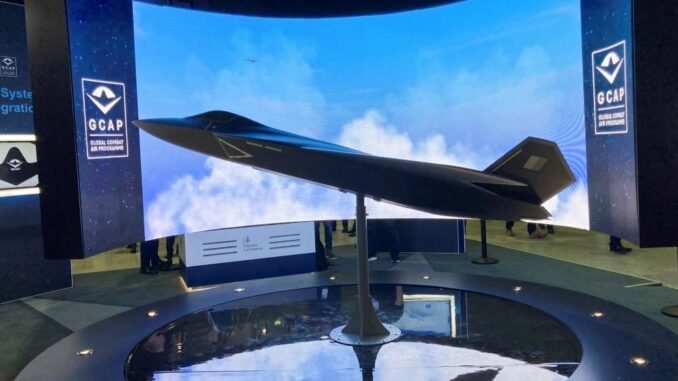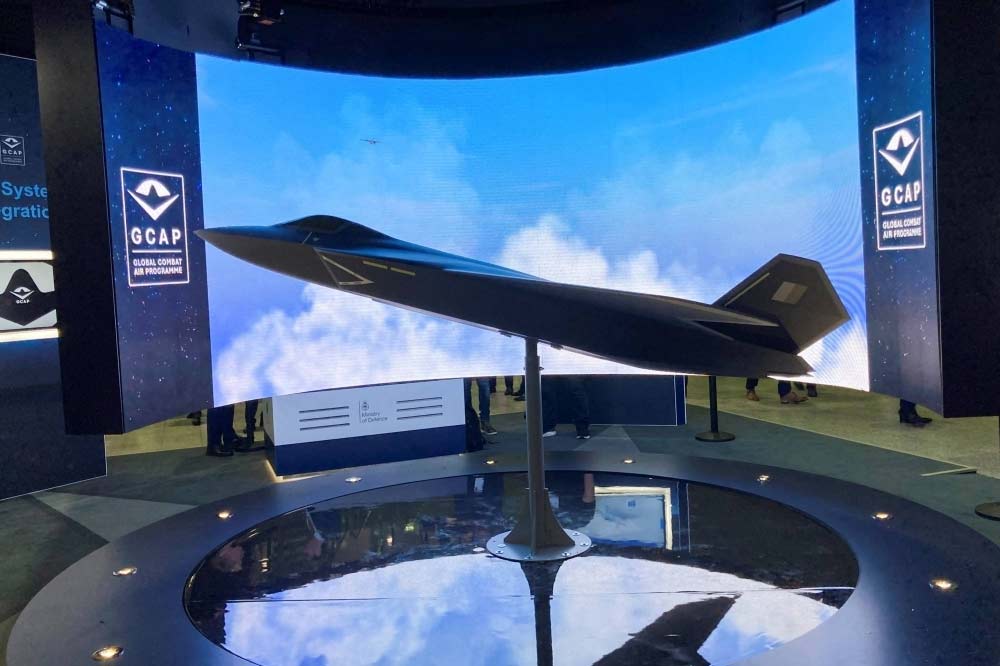
Japan limits the export of new-generation fighter jets, developed with Great Britain and Italy, to third countries. Details here.
Japan tightens the screws on exports of its new-generation fighter aircraft
In a world where military technology is advancing by leaps and bounds, Japan has taken a crucial decision that could redefine the rules of the game when it comes to exporting defense equipment. In collaboration with Great Britain and Italy, the Land of the Rising Sun is preparing to launch a new-generation fighter jet. But Tokyo is planning to restrict, at least for the time being, the export of this finished defense equipment to certain third countries. A decision that raises many questions about the balance between international cooperation and national security.
A delicate balance between cooperation and security
Fumio Kishida’s administration and the ruling Liberal Democratic Party are exploring the idea of the government submitting proposals to the ruling bloc to obtain individual approvals before exporting finished defense equipment, co-developed with other nations, to third countries. This move reflects a desire to tightly control where and how Japan’s cutting-edge technologies are shared on a global scale.
Japanese defense principles in the face of international reality
Japan’s current guidelines for the transfer of defense equipment prohibit the export of jointly developed and completed defense products to any country other than development partner nations. This policy reflects a historical caution in arms exports, but recent discussions within the government show a growing interest in revising these principles.

Komeito: a brake on the easing of restrictions?
The ruling bloc’s junior partner, Komeito, has expressed reservations about easing restrictions on such exports. Komeito’s caution underlines the internal tensions within the Japanese government over the balance between expanding defense exports and maintaining pacifist principles.
Towards a targeted export strategy
Faced with these divergences, the government and the LDP have instead moved towards limiting the scope of exports of finished defense products to third countries, focusing on the next-generation jet. This targeted approach could represent an acceptable compromise for Komeito, ensuring that advanced technologies do not fall into the wrong hands or contribute to ongoing conflicts.
nuanced defense diplomacy
One of the ideas under consideration to convince Komeito would be to allow the new fighter jet to be exported only to countries that have signed technology and defense equipment transfer agreements with Japan, thus excluding nations directly involved in conflicts. This move underlines a nuanced diplomatic approach, seeking to strengthen alliances while respecting the country’s pacifist principles.
International collaboration at the heart of the project
Japan plans to begin in-depth discussions with Great Britain and Italy next month on the development system and division of tasks for the fighter program. This international collaboration underlines the importance of defense cooperation in an increasingly complex geopolitical context.
A tight schedule for a crucial decision
Given the tight schedule, the government has asked the LDP and Komeito to reach a conclusion on export rules by the end of the month. This urgency reflects the strategic importance of the next-generation fighter jet project for Japan and its allies, as well as the need to skillfully navigate domestic political waters.
Towards high-level discussions
Kishida, who also holds the post of LDP chairman, met with Komeito leader Natsuo Yamaguchi in a bid to break the deadlock in inter-party talks. The agreement to move to discussions at policy leader level indicates a willingness on both sides to find common ground on this thorny issue.
A change of course in defense policy
In December, Tokyo revised the country’s guidelines on the transfer of defense equipment and technology, allowing for the first time since 2014 the export of finished defense products, including lethal weapons, manufactured in Japan under foreign license. This development marks a potential turning point in Japanese defense policy, offering greater flexibility in managing its alliances and defense capabilities abroad.
A future defined by prudence and innovation
Japan’s decision to limit, for the time being, the export of its new-generation fighter aircraft to third countries reflects a cautious and calculated approach to a changing geopolitical landscape. Balancing national security imperatives with international commitments, Japan navigates the complexities of modern defense diplomacy, while seeking to maintain its role as a technological and pacifist leader on the world stage. What happens next will show how these tensions will be resolved, in an ever precarious balance between historical values and contemporary strategic necessities.
War Wings Daily is an independant magazine.